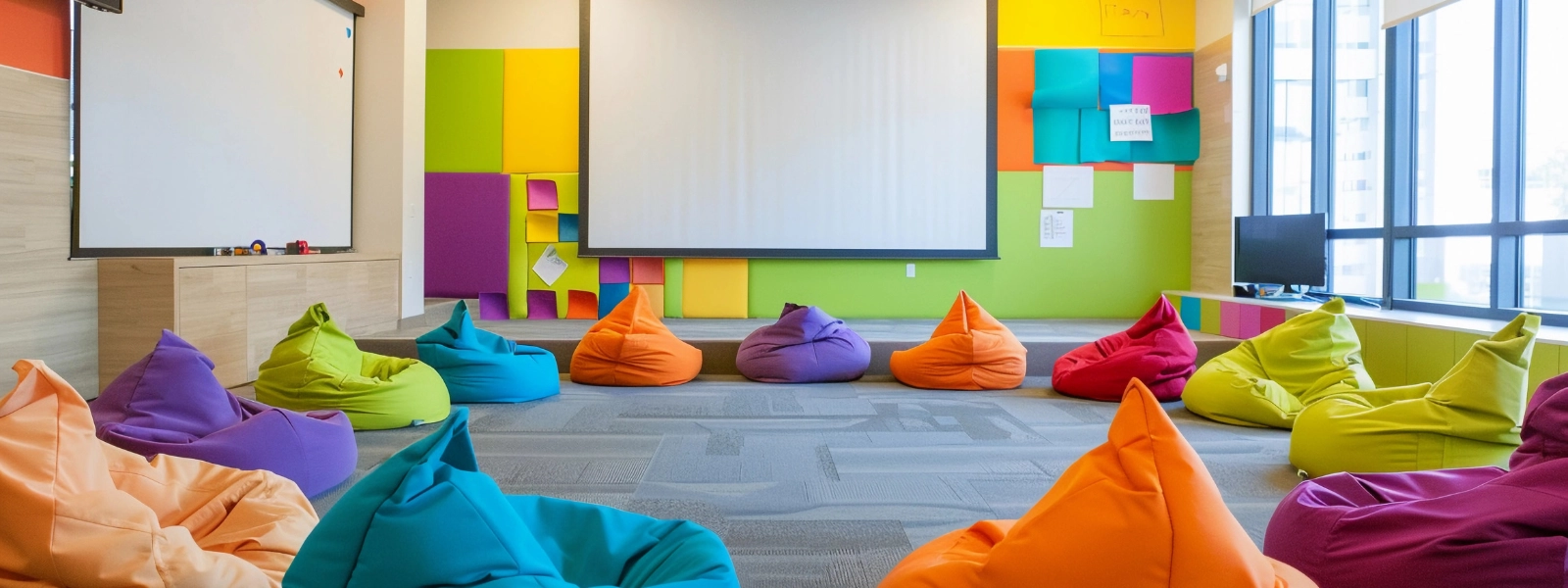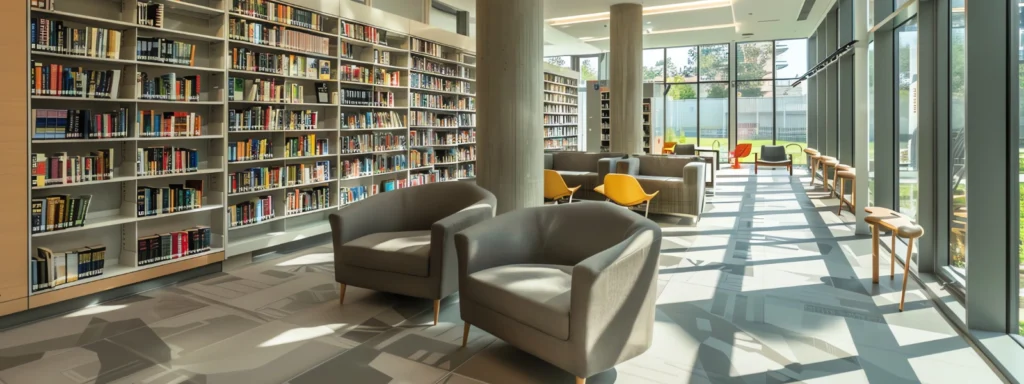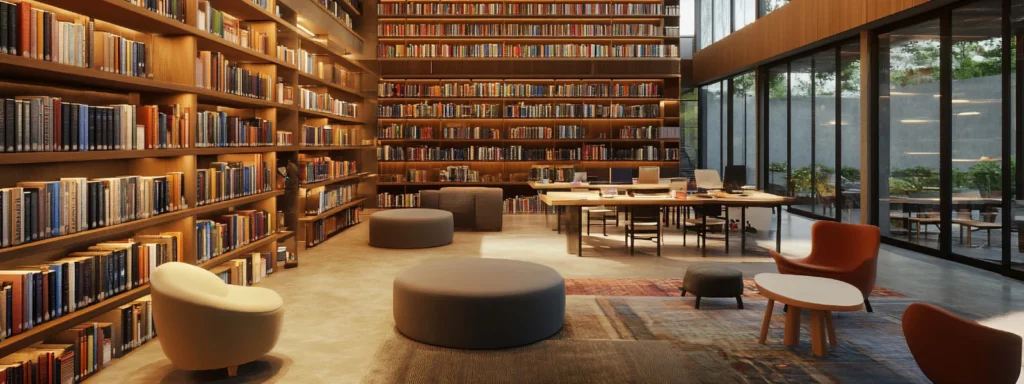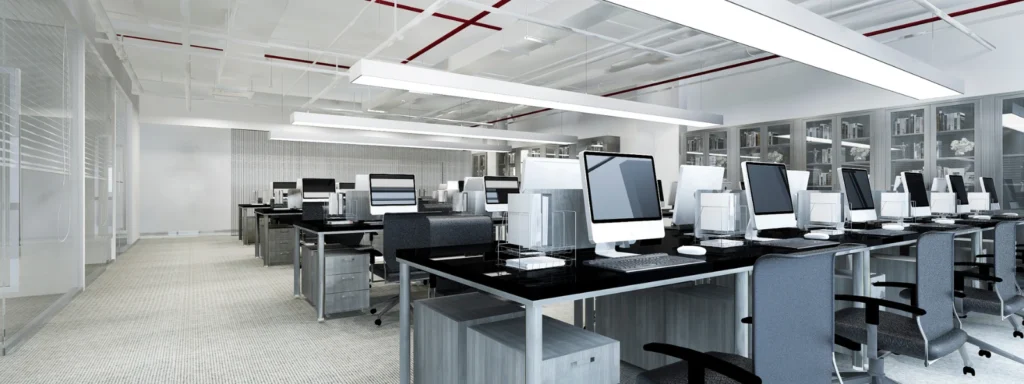Today’s K–12 school libraries are more than places for books — they’re dynamic, student-centered environments that support curiosity, collaboration, and creativity. With the shift toward digital learning and project-based education, modern libraries must be functional, flexible, and designed for diverse learning needs.
Designing a library that adapts to technology and evolving student habits requires thoughtful planning, flexible furniture, and a clear understanding of developmental stages. Let’s explore how well-designed libraries can shape a better learning experience for K–12 students.
Supporting K–12 Developmental Needs
Each stage of K–12 learning presents unique developmental and educational needs. A well-designed library should reflect these differences:
- For younger students (K–5) – Spaces should be colorful, inviting, and scaled to their size. Low shelving, soft seating, and defined reading corners encourage early literacy and a love for stories.
- For middle school students (6–8) – Design should balance structure and exploration. Areas for teamwork, research, and multimedia engagement allow students to transition into independent learners.
- For high school students (9–12) – Libraries should provide quiet study zones, digital media access, and seminar rooms. These encourage focus, research, and collaboration in preparation for higher education.
By aligning design choices with student development, schools create environments that nurture academic and social growth.
Essential Design Strategies for Modern School Libraries
Creating a modern school library requires blending functionality, flexibility, and inspiration. Here are key strategies architects and educators use:
- Zoned Layouts for Different Activities – Reading areas, digital learning hubs, and group study spaces help manage flow and noise levels.
- Flexible Furniture Systems – Mobile tables, modular seating, and stackable chairs make reconfiguration easy for different activities.
- Integration of Technology – Charging ports, interactive screens, and digital catalog kiosks support digital literacy.
- Natural Light and Acoustics – Ample daylight and sound-absorbing finishes create a calm, focused atmosphere.
- Universal Accessibility – Designs must accommodate students of all abilities with clear pathways and accessible work surfaces.
These principles ensure libraries remain adaptable, student-focused spaces that evolve with teaching methods and technology.
What Does the Modern Library Look Like for K–12 Students?
A modern K–12 library combines digital access, physical comfort, and flexible learning spaces. Instead of silent, book-filled rooms, students now find:
- Collaborative tables for group projects
- Makerspaces equipped with 3D printers and creative tools
- Digital research zones with computer terminals and online databases
- Comfortable reading nooks that encourage independent learning
- Presentation areas for class discussions or multimedia use
In short, the modern library has become a hybrid environment—part classroom, part media lab, part community space—designed to empower every type of learner.
How Are K–12 Schools Upgrading Their Libraries?
Schools across the country are upgrading their libraries to align with 21st-century learning goals. Renovations often include:
- Replacing fixed shelving with mobile units for greater space flexibility
- Integrating smart boards, tablets, and wireless internet access
- Adding modular furniture that can shift between reading time and collaboration
- Redesigning layouts to improve visibility and safety
- Including sustainability elements like LED lighting and eco-friendly materials
These upgrades are not only aesthetic but strategic investments that transform libraries into multi-purpose learning ecosystems.
Modern Libraries Feature Media Centers with Collaborative Spaces
The most progressive school libraries now function as media centers—hubs that merge traditional resources with digital learning.
- Collaboration Zones: Open areas with whiteboards and digital screens support teamwork.
- Recording Studios: Some schools add podcast or video production corners to encourage creativity and digital literacy.
- Quiet Corners: Designated silent zones provide balance for focused work and reading.
- Flexible Power Access: Floor boxes and integrated USB outlets make it easy to charge devices anywhere.
This shift from “book storage” to “learning ecosystem” supports both independent study and interactive exploration—key skills for modern learners.
Library and Media Center Upgrades Prioritize Flexible Design
Flexibility lies at the heart of all modern library upgrades. Spaces that can adapt to multiple purposes—study sessions, workshops, storytelling, or exhibitions—maximize value and long-term usability.
Design elements that promote flexibility include:
- Mobile shelving and foldable partitions
- Lightweight, movable furniture
- Multi-purpose seating that doubles as storage
- Adjustable lighting and modular layouts
As learning styles continue to evolve, flexible design ensures that K–12 libraries remain relevant, engaging, and future-ready.
Conclusion
Functional and flexible school library designs play a vital role in preparing K–12 students for success. By blending technology, adaptable layouts, and age-appropriate design, schools can create inspiring spaces that foster exploration, collaboration, and lifelong learning.
Studio Office supports educational institutions in transforming traditional libraries into modern learning environments—balancing creativity, function, and flexibility at every step of the design process.





